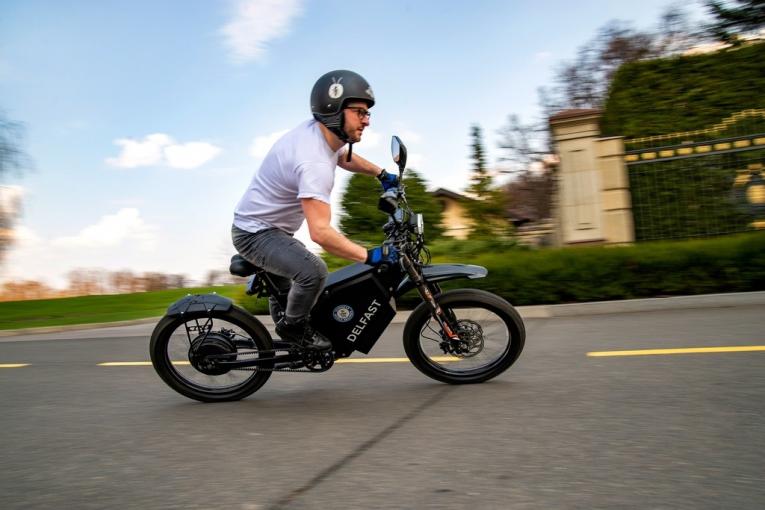Electric bicycles are having their moment! The idea of having assisted pedaling has been around for several years. However, sales of these vehicles weren’t so high until recently. In 2020, sales of electric bikes finally surpassed those of pedal bikes in some countries for the first time. The massive adoption of these vehicles has started because of different reasons like:

· Low carbon footprint. As general concern for climate change and global warming grows, people are more interested in electric vehicles;
· Healthy lifestyle. Cycling is one of the most recommended sports to keep your body in good shape. Electric bikes make this sport available to anyone independently of age or fitness level;
· Lower cost. Compared to other commuting alternatives like cars or motorcycles, electric bikes have lower running costs. You can save a lot of money on fuel, road taxes, parking, etc.
With so many advantages, it is difficult to resist the urge to purchase an electric bike. Many first-time buyers are overwhelmed by the enormous variety of e-bikes in the market. There are electric bikes designed for specific purposes: leisure, commuting, mountain ebike, and more. Choose one that matches your intended usage and budget.
However, take into account that, like with many other products, you get what you pay for. In the case of electric bikes, the battery is crucial. It also accounts for a good percentage of the total price of the e-bike. Why so? Why is the battery so important? The size of the battery is directly related to the maximum speed, power, and range that the e-bike can reach. The range of an electric bicycle is the maximum distance it can travel on a single charge. Usually, the larger the battery, the larger the range.
Electric Characteristics of the Battery
When we call an e-bike battery large, it is not necessarily physical size. We refer to its electric characteristics and, chiefly, battery capacity. Usually, physically large batteries have greater voltage and capacity, but it is not a rule. We’ll explain these parameters in detail.
Batteries are generally characterized by their voltage in Volts (V). The vast majority of e-bikes are fitted with a battery of either 36V or 48V. This voltage allows the electric motor to provide modest assisted pedaling. Also, the speed that an e-bike can reach with such a battery is not very high. More powerful electric bicycles are fitted with 52V batteries. These electric bikes are more expensive, but they are also faster.
The battery capacity in Amp-Hours (Ah) determines the range of an e-bike. Other small factors also play a role, but the battery is the most important one. This parameter indicates the maximum electric current in Amperes (Amp) that the battery can deliver to the motor. The electric power of the electric motor in Watts (W) is the product of voltage and current. Hence, the larger the Ah value, the longer the battery can sustain the motor. In other words, the higher the Ah value, the greater the range of the e-bike. The majority of e-bikes are fitted with 10Ah-20Ah batteries.
What Type of Battery Does a Long-Range Electric Bike Use?
To answer what type of battery does a long-range electric bike use, first, we must define what distance we can consider long-range. In the market, electric bicycles advertised as long-range can reach approximately 100 miles on a single charge. Other factors like the frequent use of a throttle mode can shorten this value. In any case, a range of approximately 100 miles is obtained with a battery of no less than 20 Ah. Since this type of electric bike uses motors with power in the order of 1000W, the battery voltage is generally 52V.
One may wonder, why not use a high-capacity battery in every ebike? The reason that, despite their benefits, high-capacity batteries have some inconveniences like:
· Price. The larger the capacity, the more expensive the battery is. Hence, batteries with lower capacity are used to accommodate different budgets.
· Size. High-capacity batteries tend to be larger and cumbersome
· Weight. In addition to a large size, high-capacity batteries tend to be heavier.
Manufacturers choose the type of battery carefully, depending on the targeted application and market. For example, a commuting e-bike with a 10Ah Lithium-ion battery weighing 6-8 lb can reach a range of 20 miles. In most cities, this range is enough for a round trip to work, for example.
Where Does the Delfast Top 3.0 Stand?
The Delfast TOP 3.0 is equipped with a 72V/48Ah Lithium-ion battery that powers a 3000W motor. These parameters allow the TOP 3.0 to reach a range of 200 miles and a maximum speed of 50 mph. Because of the advanced technology used to manufacture this battery, weight and size are kept to practical values.
Conclusion
Electric bikes are here to stay. More and more people are adopting these practical vehicles for commuting or leisure activities. If you have decided to pull the trigger on an e-bike, you must define the speed and range that you need. Based on this information, you can select the type of e-bike and battery that fulfill your demands.
Leave a Reply